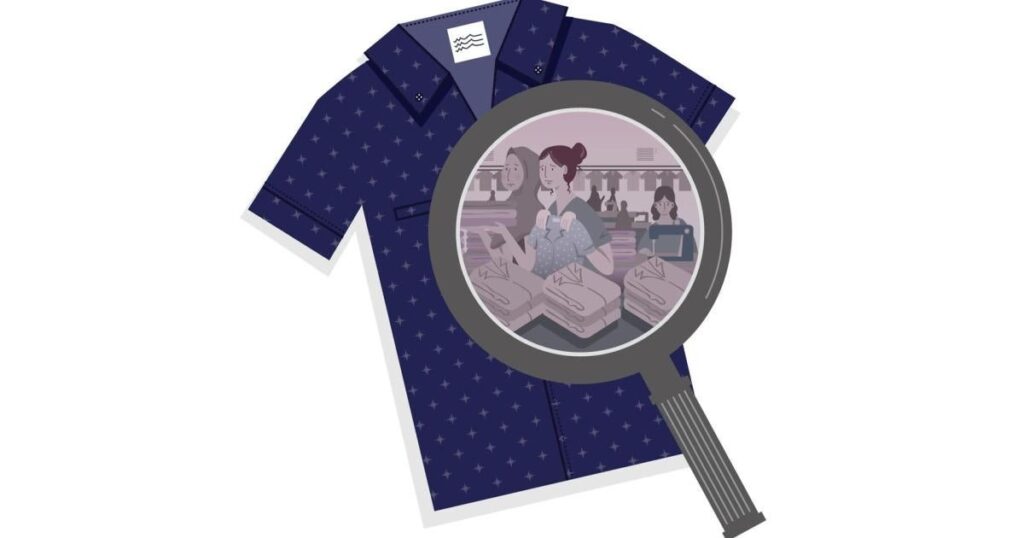Have you ever picked up a piece of clothing and wondered where it truly came from? Who made it? What materials were used? How was it transported to the store? For a long time, the answers to these questions were hidden behind a simple clothing label. But in today’s world, consumers are asking more. We’re no longer satisfied with just a brand name; we’re demanding transparency in fashion.
This guide will explain what transparency in fashion means, why it’s becoming so important, what problems it helps solve, and how you, as a consumer, can demand more information and make choices that truly align with your values.
What is Transparency in Fashion?
At its core, transparency in fashion means that brands openly share information about their entire supply chain. It’s about knowing the “who, what, where, and how” behind your clothes.
This includes:
- Where materials come from: Knowing the farms where cotton is grown, the origins of dyes, or the source of recycled plastics.
- Where clothes are made: The names and locations of factories, not just the country.
- Who makes the clothes: Information about the workers, their wages, and their working conditions.
- Environmental impact: Data on water use, carbon emissions, and waste at every stage of production.
- Ethical practices: Details about fair wages, safe workplaces, and no child or forced labor.
Imagine a clear map that shows every step a garment takes from raw fiber to your closet. That’s transparency.
Why Transparency is So Important (The Hidden Problems of “Hidden” Fashion)
For decades, the fashion industry has often operated in the dark, especially in the fast-paced “fast fashion” sector. This lack of transparency has allowed many serious problems to thrive:
- Human Rights Abuses:
- Unsafe Working Conditions: Tragedies like the 2013 Rana Plaza factory collapse in Bangladesh, which killed over 1,100 garment workers, highlighted the extreme dangers workers face when safety standards are ignored. Without transparency, it’s easy for brands to claim ignorance.
- Low Wages: Millions of garment workers, particularly in developing countries, are paid extremely low wages – often not enough to live on or support their families. They are trapped in poverty while brands make huge profits.
- Child and Forced Labor: In hidden supply chains, child labor and even forced labor can occur, violating fundamental human rights.
- Lack of Voice: Workers often have no voice, no unions, and no ability to demand better conditions without fear of losing their jobs.
- Environmental Destruction:
- Pollution: Factories using harmful chemicals and dyes often discharge toxic waste directly into rivers, polluting vital water sources for communities.
- Massive Waste: The constant demand for new, cheap clothes leads to enormous textile waste in landfills. Without transparency, it’s hard to track how much waste is produced and if brands are taking responsibility for it.
- High Carbon Footprint: From growing materials to manufacturing and shipping globally, the fashion industry has a massive carbon footprint. Lack of transparency makes it difficult to measure and reduce these emissions.
- “Greenwashing” and Misleading Claims:
- When brands aren’t transparent, it’s easy for them to make vague claims about being “eco-friendly” or “ethical” without actually doing much. This is called greenwashing, and it tricks consumers into thinking they’re making a good choice when they might not be.
Transparency is the first step towards accountability. When brands show you what’s happening, they become responsible for fixing the problems they find.
The Rise of the Conscious Consumer: Why We’re Demanding More
Consumers today are more aware than ever. Social media, documentaries, and news reports have shed light on the dark side of fast fashion. People want to buy products that align with their values.
- Ethical Concerns: Many buyers refuse to support brands that exploit workers or harm the environment.
- Desire for Authenticity: Consumers want real stories and real impact, not just marketing slogans.
- Demand for Sustainability: Growing environmental awareness means people want eco-friendly products.
- Empowerment: Knowing the truth empowers consumers to make choices that truly make a difference.
What Does Transparency Look Like? (And What to Look For)
True transparency goes beyond a few nice words on a website. It involves verifiable, detailed information.
- Detailed Supply Chain Maps: Brands should show you not just the country, but the names and locations of their factories, fabric mills, and even their raw material suppliers (like cotton farms). Some even use interactive maps online.
- Worker Well-being Information: This includes details about fair wages (e.g., commitments to living wages), working hours, safety protocols, and whether workers have the right to form unions.
- Environmental Data: Brands should share measurable data on their water consumption, carbon emissions, and waste production. They should also detail their efforts to reduce these impacts.
- Certifications from Reputable Organizations: While certifications aren’t total transparency on their own, they are a powerful tool. Look for third-party certifications that audit a brand’s claims:
- Fair Trade Certified™: Focuses on fair wages and working conditions.
- GOTS (Global Organic Textile Standard): Ensures organic materials and ethical processing.
- Bluesign®: Guarantees responsible and sustainable production from raw materials to finished product.
- B Corp: Certifies companies that meet high standards of social and environmental performance.
- Annual Impact Reports: Many transparent brands publish yearly reports detailing their progress (or challenges) in sustainability and ethics.
- “Product Passports”: In the future, technology like blockchain could allow us to scan a QR code on a garment and see its entire history – where it was made, by whom, and its environmental footprint.
How You Can Demand More Transparency
Your voice and your wallet have power. Here’s how you can actively demand more transparency:
- Research Before You Buy: Before making a purchase, take a few minutes to visit the brand’s website. Look for sections like “Sustainability,” “Our Impact,” “Supply Chain,” or “Ethics.” If you can’t find clear information, that’s often a red flag.
- Look for Certifications: Actively seek out the recognized certifications mentioned above on clothing labels or brand websites.
- Ask Questions Directly: Use social media, email, or customer service lines to ask brands specific questions: “Can you tell me where this garment was made?” “Do your factory workers earn a living wage?” “What are your water reduction targets?” Your questions create pressure for change.
- Support Transparent Brands: Choose to spend your money with brands that are already making an effort to be transparent and responsible. This sends a clear message to the industry.
- Shop Secondhand: Buying pre-owned clothing is inherently transparent in a way, as you’re giving an existing item a new life, reducing demand for new production.
- Use Ethical Shopping Apps/Websites: Resources like the “Good On You” app (available in some regions) rate brands on their ethical and sustainable practices, making it easier to find transparent choices.
- Share What You Learn: Talk to friends and family about transparency in fashion. Share articles, documentaries, or brands you admire on social media. Educate others.
- Support Advocacy Groups: Organizations working for transparency and ethical fashion often have petitions or campaigns you can join.
The Future of Fashion: Transparent by Default?
The momentum for transparency is strong. As consumers continue to demand more, and as new technologies make it easier to track supply chains, it’s likely that transparency will become the norm, not the exception. Regulations may also start to require more openness from brands. The goal is a future where the story behind your clothes is clear, verifiable, and something to be proud of.
Conclusion: Your Power, Your Choices
Demanding transparency in fashion is a powerful act of conscious consumerism. It means moving beyond a simple label and actively seeking to understand the full journey of your clothes. By supporting brands that are open about their practices and by asking questions, you contribute to a future where human rights are respected, the environment is protected, and every garment has a clear, ethical story. Your choices truly matter.


